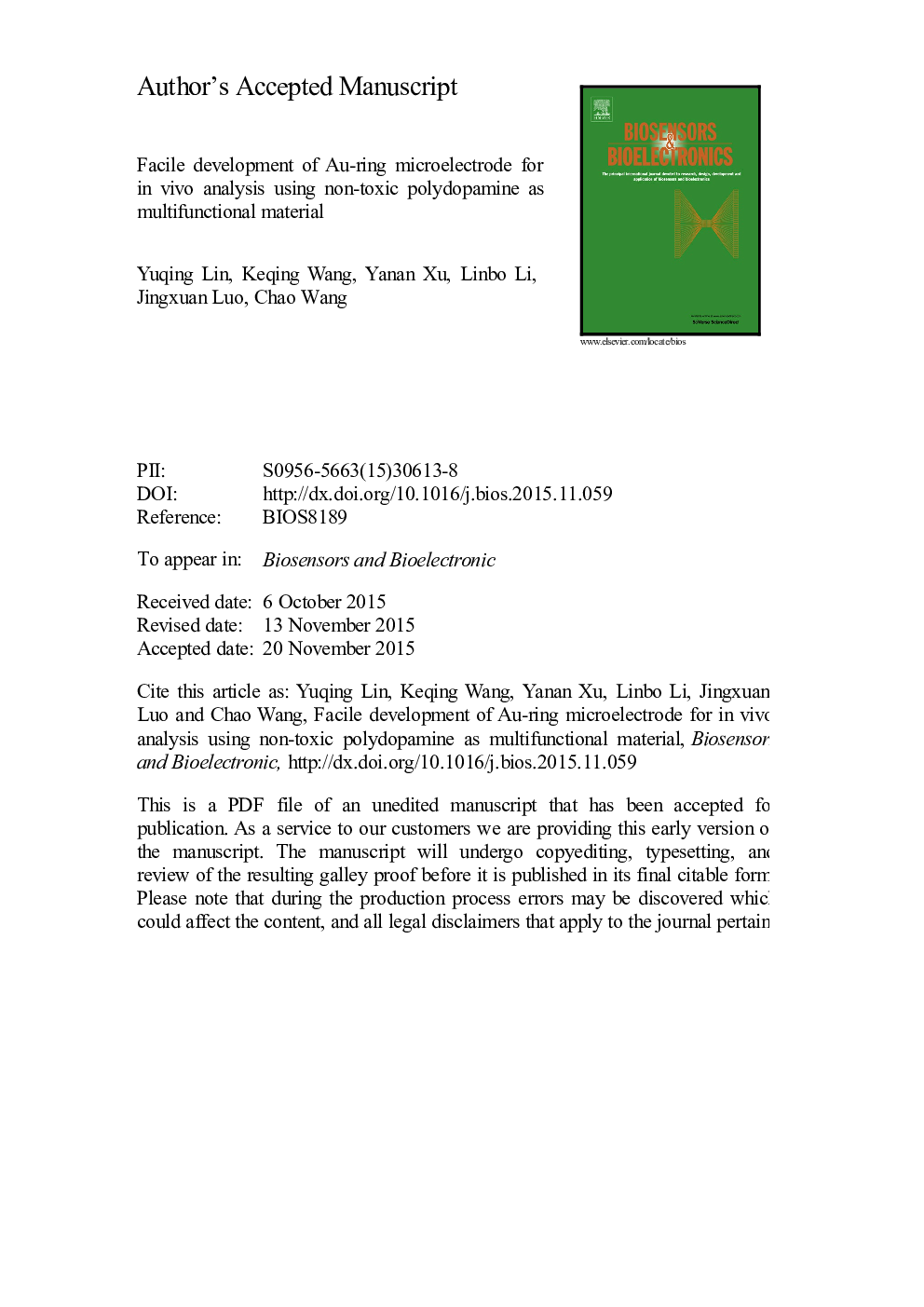| Article ID | Journal | Published Year | Pages | File Type |
|---|---|---|---|---|
| 7230970 | Biosensors and Bioelectronics | 2016 | 15 Pages |
Abstract
In this study, we describe a facile and fast wet deposition technique to bottom-up fabricate Au-ring microelectrodes (Au-RMEs) using non-toxic polydopamine as multifunctional grafting material instead of commonly used (3-aminopropyl)-trimethoxysilane (APTMS). The Au-RMEs are fabricated by growing Au film uniformly inside of a pulled glass capillary. Au-RMEs with tip apex diameter ranging from 15 to 50 μm were fabricated involving four consequent steps, i.e. hydroxylating the inside wall of a pulled glass capillaries, grafting adhesive polydopamine (PDA) film to hydroxyl group surface, seeding gold nanoparticles (AuNPs) onto PDA surface and finally growing thickness-tunable gold layer on top of gold nanoparticles. After 3-mercaptopropionic acid (MPA) self-assembled monolayers (SAMs) modification, the Au-RMEs obtain improved specificity and sensitivity for monitoring of dopamine (DA) with respect to alleviating ascorbic acid (AA) interference. The current response is in wide linearity to DA concentration in the range of 0.2-100.0 μM with a correlation coefficient of 0.998 and the detection limit as low as 50.0 nM (S/N=3). In addition, the designed glass substrates of Au-RMEs were mechanically stronger and their tips can be further sharped by adjusting the pulling program. In order to demonstrate the utility of these fabricated microelectrodes in neurochemistry, Au-RMEs were used for electrochemical monitoring of DA release stimulated by K+ in the striatum of rats. Thus, this study offers a novel and reliable strategy for preparing Au microelectrodes and maybe an attractive alternative to the traditional options for continuous and in vivo electrochemical monitoring of DA in various physiological processes.
Related Topics
Physical Sciences and Engineering
Chemistry
Analytical Chemistry
Authors
Yuqing Lin, Keqing Wang, Yanan Xu, Linbo Li, Jingxuan Luo, Chao Wang,
